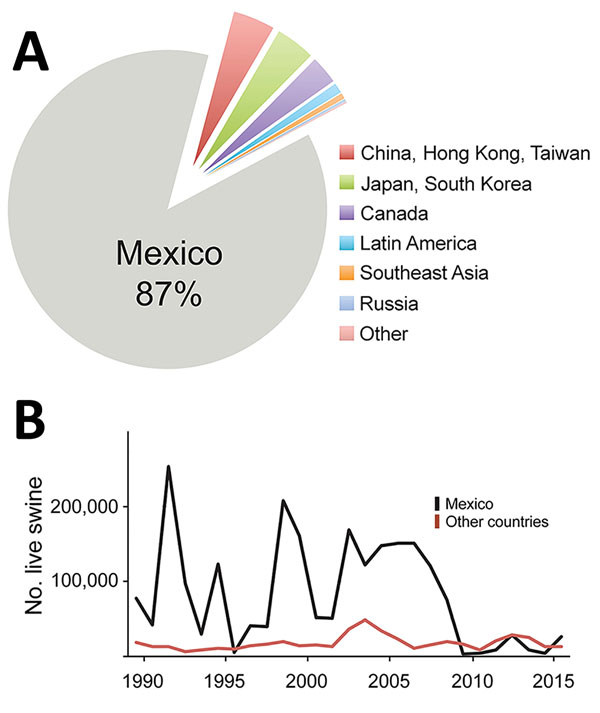Volume 25, Number 4—April 2019
Research
Human-Origin Influenza A(H3N2) Reassortant Viruses in Swine, Southeast Mexico
Figure 1

Figure 1. Swine exportation to Mexico from the United States and eradication of CSFV in Mexico. A) Hogs exported from the United States to other countries globally during 1989–2015. Of ≈3.7 million exported, ≈3.1 million (≈87%) were exported to Mexico. B) Since 1989, the number of hogs exported from the United States to Mexico has experienced year-to-year variation. Data are available from the US International Trade Commission (https://dataweb.usitc.gov).
1Current affiliation: Kansas State University, Manhattan, Kansas, USA.
Page created: March 17, 2019
Page updated: March 17, 2019
Page reviewed: March 17, 2019
The conclusions, findings, and opinions expressed by authors contributing to this journal do not necessarily reflect the official position of the U.S. Department of Health and Human Services, the Public Health Service, the Centers for Disease Control and Prevention, or the authors' affiliated institutions. Use of trade names is for identification only and does not imply endorsement by any of the groups named above.